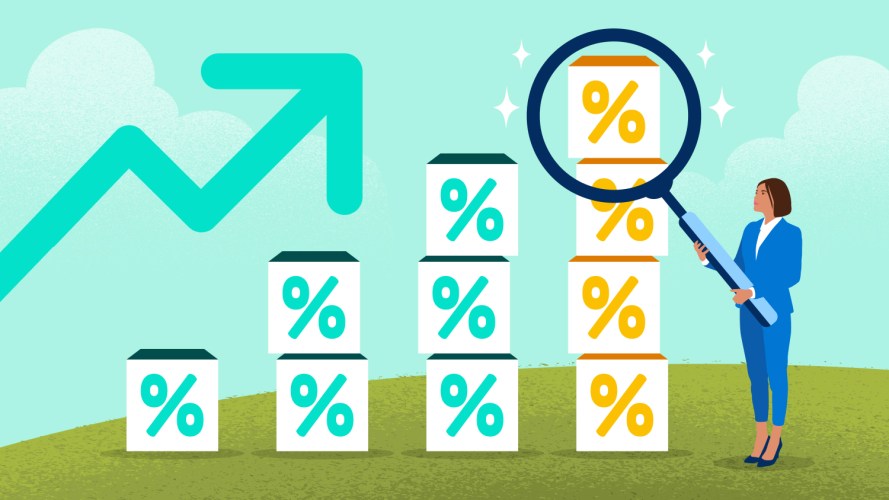3 Ways Generative AI Will Help Marketers Connect With Customers
3 min read

When forecasting your company’s financial future, the right calculations can make the difference between on-target projections and missed opportunities. You might think you know when your sales are up or down (and how that affects the bottom line), but are you using the right formula?
If you’re unsure, look no further: The percentage of sales method is one of the most easiest ways to calculate forecasts, according to Harvard Business Review. If you utilize this approach, you’ll be able to confidently make adjustments to your strategies to stay on course and hit those big numbers.
Get complete visibility of your pipeline, forecast, and team — with Revenue Intelligence from Sales Cloud.



This forecasting method uses estimated overarching sales growth to determine changes to any financial line items that directly correlate to sales. This is commonly done by percentage — if you know the percent amount your sales will increase, you can apply that to all line items as well, both assets and expenses. This includes things like accounts payable, accounts receivable, cash, cost of goods sold (COGS), fixed assets, and net income.
Here’s a simple example: Let’s say a business made $100,000 in the previous year. Their cash on hand represented 20% of that amount (equaling $20,000). After some research and analysis, the owner determined that company revenue would grow by about 20% in the coming year. That means revenue would be $120,000 and the forecasted cash on hand would be 20% of $120,000, or $24,000.
With the percentage of sales method, you can quickly forecast financial changes to your business — including both assets and expenses — based on previous sales history. This allows you to adjust budgets, strategies, and resourcing to ensure you hit desired targets.
Applying the formula takes a few steps — but don’t worry, they’re simple:
Most companies focus on monthly, quarterly, or annual forecasts.
Using CRM data, calculate total sales revenue for your chosen time period.
These commonly include:
Divide your line item amounts by the total sales revenue amount to get your percentage.
Using research and CRM data analysis, identify the percent increase (or decrease) your sales revenue is likely to see in the upcoming time period. Then calculate the total revenue by converting that percentage to a decimal (ex. 40% = .4), adding 1 (to account for 100% of the current revenue amount), and multiplying by the current time period’s sales revenue.
Using the percentages you mapped in step 4, determine what the amount associated with each asset or expense will be in the upcoming time period. For example, if COGS accounted for 30% of your revenue and the forecasted revenue is $100,000, your forecasted COGS for the upcoming time period will be $30,000.

3 min read

6 min read
Frank had a holiday hit selling disco ball planters online and he wants to know what his expenses and assets will look like if sales keep going up.
Frank takes a look at his annual financial statement and is happy to see that he made a total of $100,000 in sales last quarter. Then, he adds up all of his sales-related assets and expenses for a total of $25,000:
Next, Frank divides each one of these by his total sales ($100,000) to get the percentage of sales amount:
After seeing trends across the last few quarters, Frank is confident he can get a 10% revenue increase next quarter, coming to $110,000. To see how this will affect his contributing assets and expenses, he multiplies the percentages he calculated for each by the new revenue amount. He estimates the following amounts for the coming quarter:
Frank wants to see the percentage of sales for his expenses specifically so he goes back to his initial amounts and sees that expenses totaled $20,000, or 20% of revenue.
For most consumer companies (B2C), the expense-to-sales ratio should be in the range of 25% to 30% of net sales. Frank’s small company is doing exceptionally well, with only 20% of his sales revenue going towards sales-related expenses. (For business-to-business companies (B2B), the target should range from 15% to 20% of net sales.)
One of the most obvious advantages of the percentage of sales method is that it’s straightforward and doesn’t require a lot of complicated calculations. Other advantages include:
While the percentage of sales method is great for forecasting on the fly, it does have a few disadvantages:
As helpful as the percentage of sales method can be for financial projections, it’s not an all-in-one forecasting solution. Using data mined from your CRM — along with more in-depth forecasting methods — can help you make more consistent, accurate forecasts.
When you can quickly create sales forecasts, you can adapt to sudden storms. Leverage the percentage of sales method to get a clear vision of your financial future so you can map strategies that work. Ultimately, this will help ensure you’re on a path to growth.
What could you do with relevant insights at your fingertips? Sell smarter, take action, and hit your forecasts. That’s how Sales Analytics works.




Get the latest articles in your inbox.


